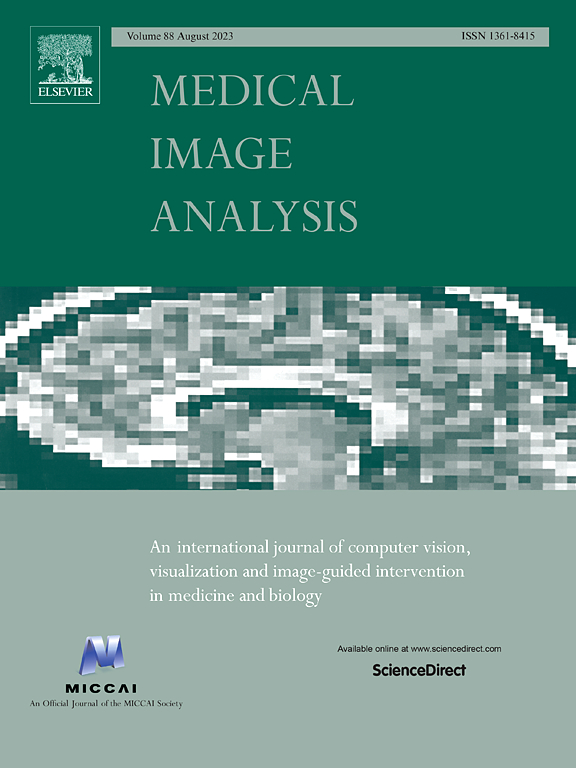VSNet: Vessel Structure-aware Network for hepatic and portal vein segmentation
IF 10.7
1区 医学
Q1 COMPUTER SCIENCE, ARTIFICIAL INTELLIGENCE
引用次数: 0
Abstract
Identifying and segmenting hepatic and portal veins (two predominant vascular systems in the liver, from CT scans) play a crucial role for clinicians in preoperative planning for treatment strategies. However, existing segmentation models often struggle to capture fine details of minor veins. In this article, we introduce Vessel Structure-aware Network (VSNet), a multi-task learning model with vessel-growing decoder, to address the challenge. VSNet excels at accurate segmentation by capturing the topological features of both minor veins while preserving correct connectivity from minor vessels to trucks. We also build and publish the largest dataset (303 cases) for hepatic and portal vessel segmentation. Through comprehensive experiments, we demonstrate that VSNet achieves the best Dice for hepatic vein of 0.824 and portal vein of 0.807 on our proposed dataset, significantly outperforming other popular segmentation models. The source code and dataset are publicly available at https://github.com/XXYZB/VSNet.
求助全文
约1分钟内获得全文
求助全文
来源期刊

Medical image analysis
工程技术-工程:生物医学
CiteScore
22.10
自引率
6.40%
发文量
309
审稿时长
6.6 months
期刊介绍:
Medical Image Analysis serves as a platform for sharing new research findings in the realm of medical and biological image analysis, with a focus on applications of computer vision, virtual reality, and robotics to biomedical imaging challenges. The journal prioritizes the publication of high-quality, original papers contributing to the fundamental science of processing, analyzing, and utilizing medical and biological images. It welcomes approaches utilizing biomedical image datasets across all spatial scales, from molecular/cellular imaging to tissue/organ imaging.
 求助内容:
求助内容: 应助结果提醒方式:
应助结果提醒方式:


